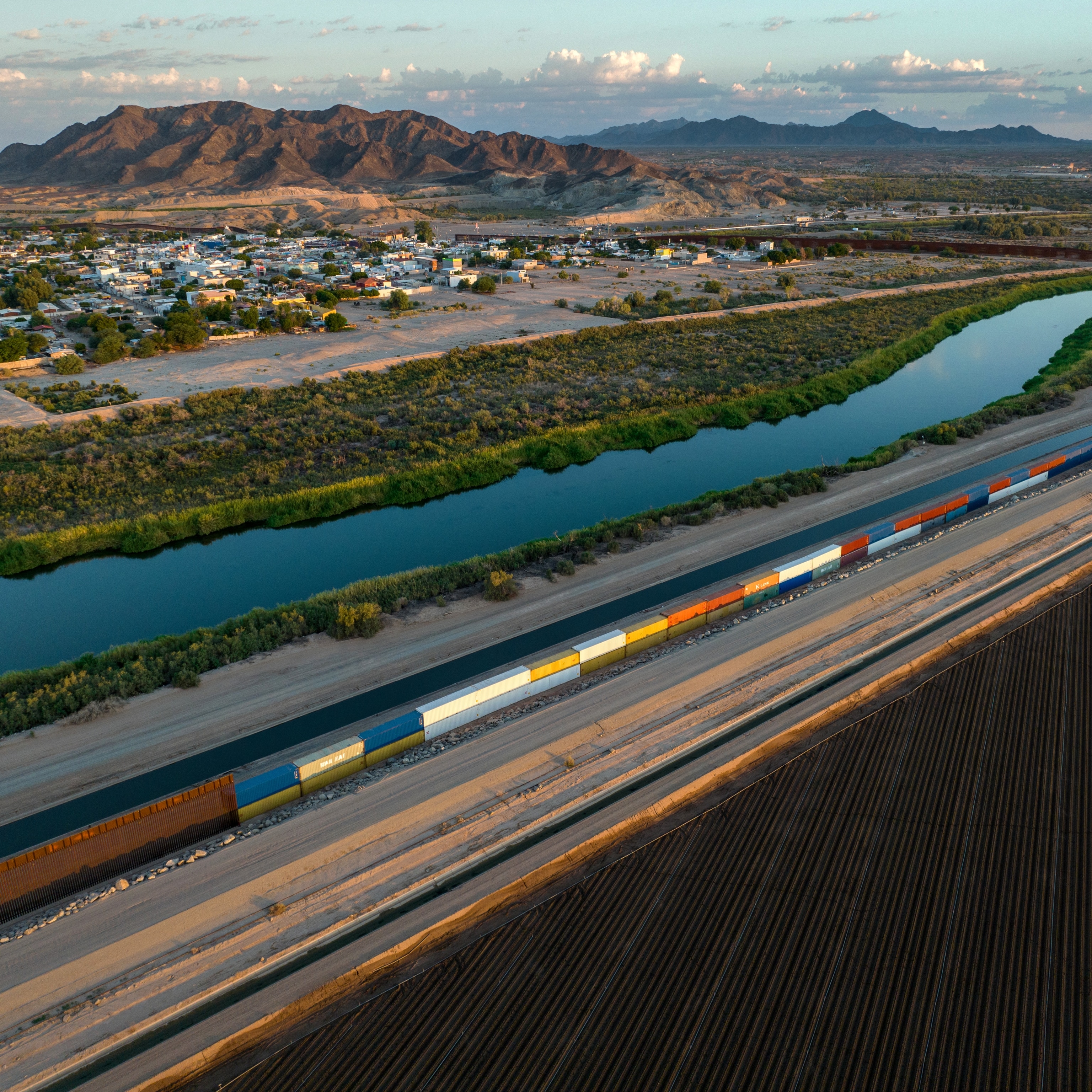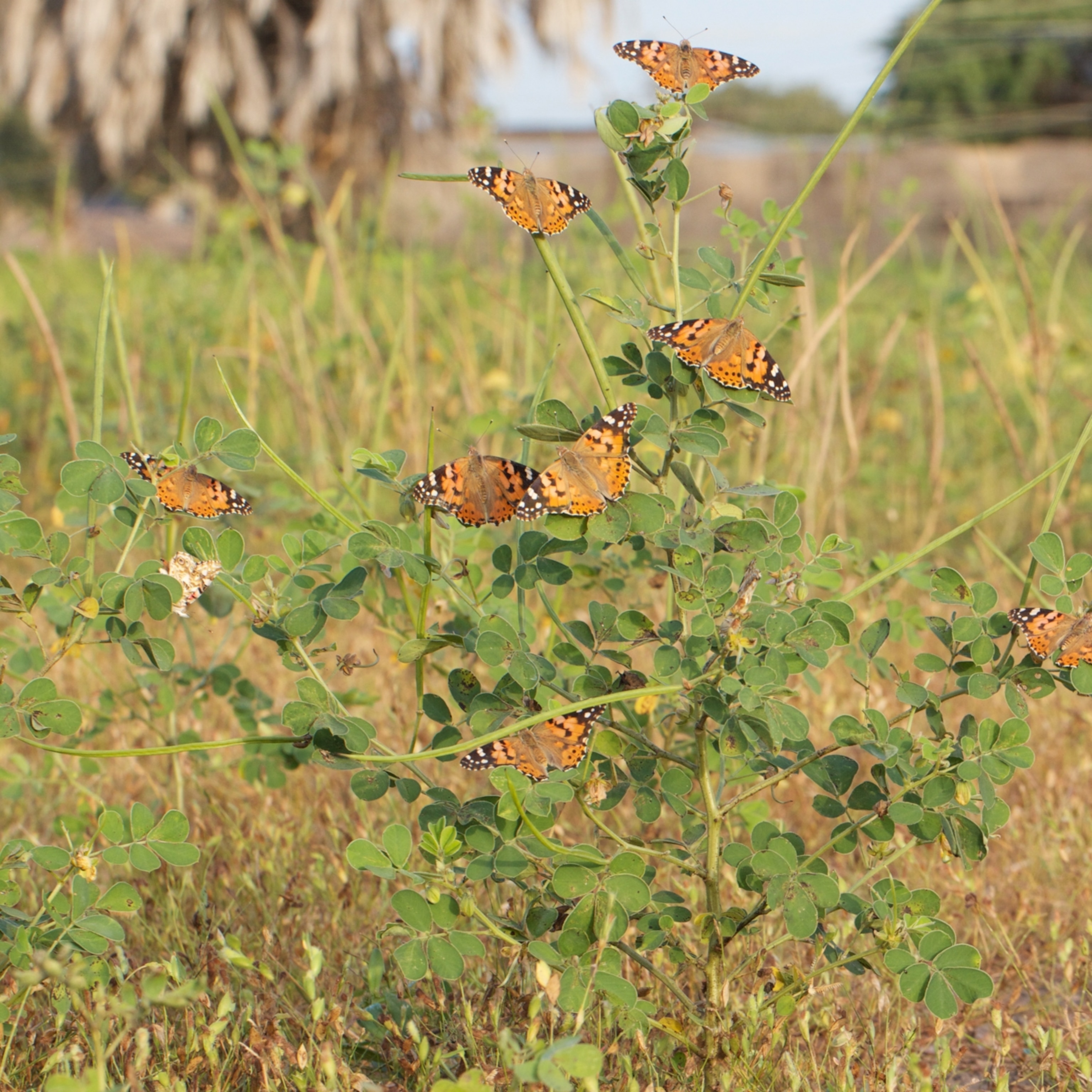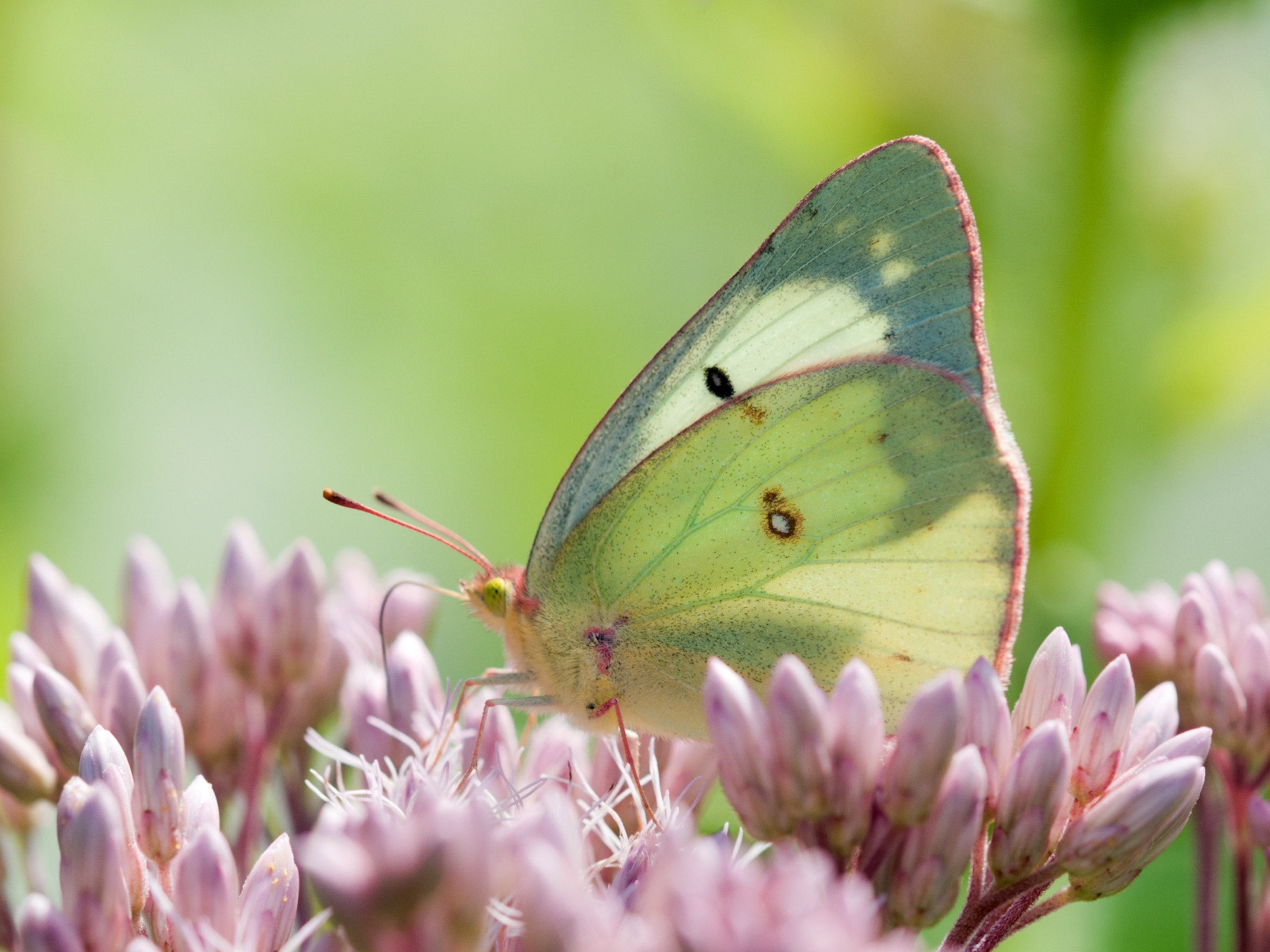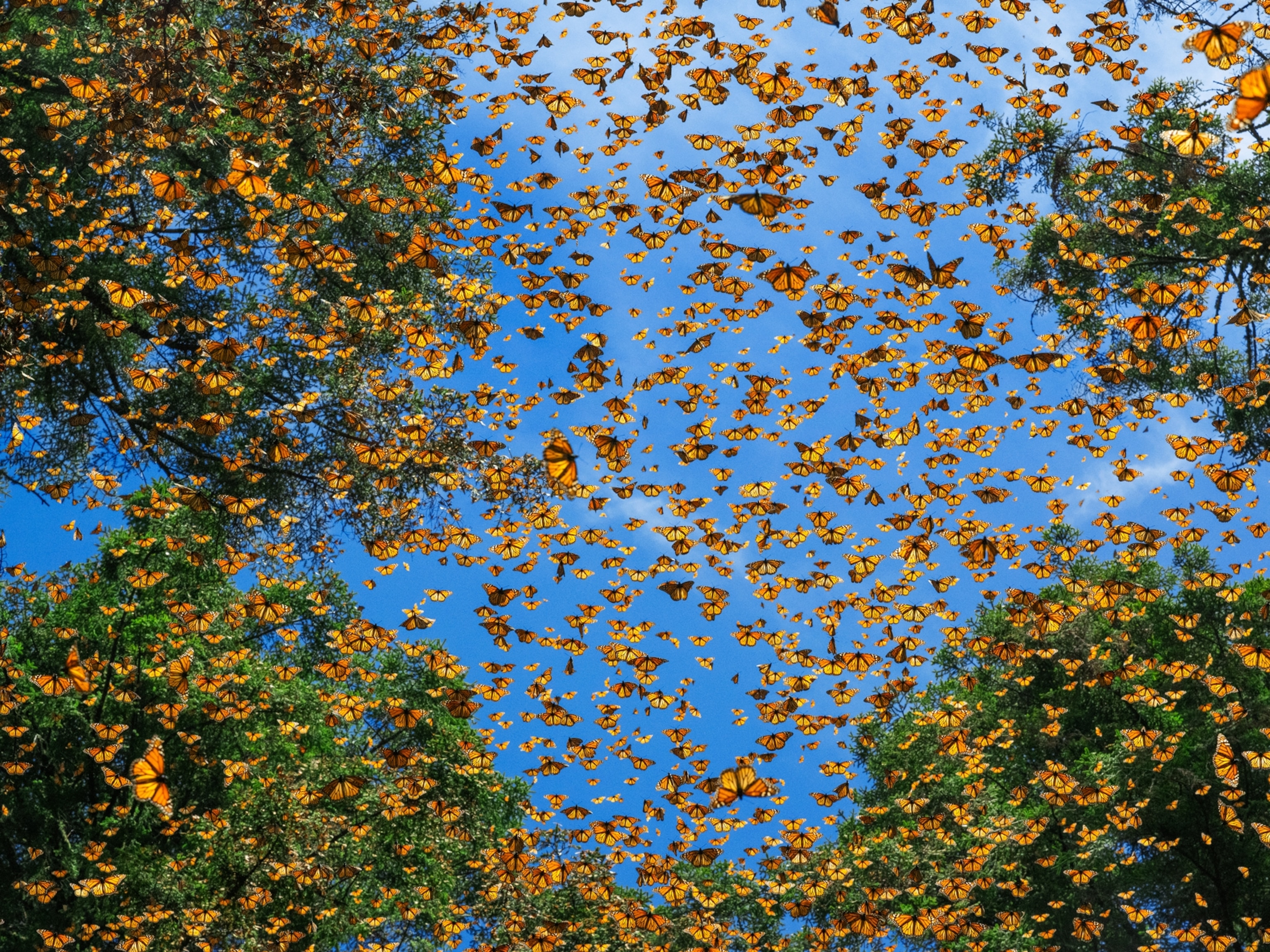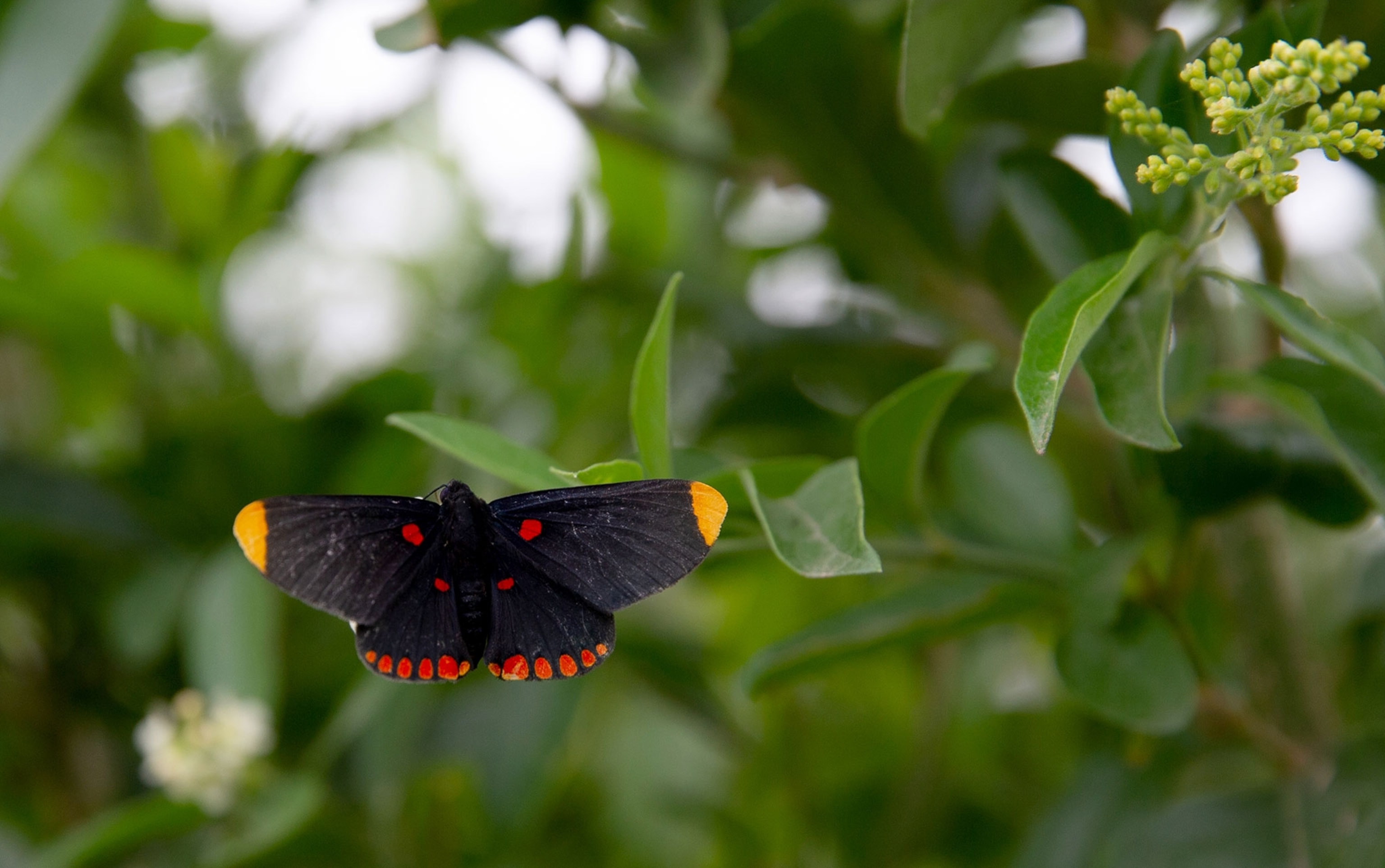
The border wall is set to cut through a butterfly sanctuary
Some of the U.S.'s highest concentrations of butterflies can be found at the 100-acre center.
Construction on a six-mile stretch of a steel and concrete wall along the Texas-Mexico border is expected to begin at the end of this month. But conservationists are urgently battling the government in court before it's too late for the National Butterfly Center, a private piece of property owned by the North American Butterfly Association (NABA) that could see a wall slice through its grounds.
The 17-year-old center sits on 100 acres just south of Mission, Texas, a city with the Rio Grande River at its back and an hour north of the state's southern tip.
Before it was purchased by NABA, the butterfly center's land was an onion farm, says Executive Director Marianna Treviño-Wright. And in the years since, the center has been revegetating the land with native and endangered plants that serve as nectar sources for butterflies.
The Lower Rio Grande Valley has some of the highest concentrations of butterflies in the U.S.—in both volume and number of species. The iconic, migrating monarch is just one of them. Thanks to the valley's geography, it contains 11 different ecological regions and has a large variety of flowering plants. With those plants come the different types of butterflies that evolved with them.
“Each species is intimately tied to one or two plant species,” says Treviño-Wright. “If their host plant disappears, they disappear.”
Seizing butterfly country
That the butterflies will disappear with the wall's construction is what worries Treviño-Wright and other conservationists. In many regions along the border, the wall will not sit at the exact line dividing the U.S. and Mexico. In many cases, as with the center, it will be constructed a mile or two north of the border into the U.S.
Many federal and state parks could be divided. Federal nature reserves offer a path of least resistance for the government because it already owns the land. Theoretically, Texas's Governor Gregg Abbott could push back against wall construction in state parks, though experts think it's unlikely the state's right-leaning governor would take such an action.
To seize private property like that owned by the National Butterfly Center, the Department of Homeland Security can exercise eminent domain. The process allows the government to take private property in the name of providing a public good, such as security. They must still pay landowners what they consider a fair fee.
Those who challenge the DHS's eminent domain rarely win, “and that leaves little recourse,” says Raul Garcia, a lawyer on the senior legislative counsel at environmental group EarthJustice.
In October 2018, the Center for Biological Diversity and Defenders of Wildlife filed a lawsuit against DHS to stop border wall construction, citing violations against laws like the Endangered Species Act. Earlier this week, the National Butterfly Center attempted to buy more time by also filing a restraining order against DHS in continuing the wall.
Garcia's says it's difficult to predict the center's outcome and that it depends on the judge who takes the case and the Trump administration's next move.
Treviño-Wright says the center is yet to receive a court date.
Fractured land could impact wildlife
It was on February 3, Super Bowl Sunday, that Treviño-Wright says she began seeing construction equipment drive through the center's property, though she had seen surveyors on the center's land over the past year.
The inland placement of the border wall would cut right through the center.
Under eminent domain they're only allowed to take as much land as they plan to devote to public use,” says Garcia “What happens, particularly in the context of the center, is you take the land in the middle, and on both sides you have land the butterfly center will still own.”
“We're going to have a gate with an electronic keypad code,” says Treviño-Wright, which will allow them to access the two halves of the property if the wall is built. They won't be the only ones. Neighbors—including a Catholic Church, an RV park, and private homes—will also have access to a gate.
In response to National Geographic's questions, U.S. Customs and Border Protection said the following in email: “As a matter of policy, CBP does not comment on pending litigation. However, lack of comment should not be construed as agreement or stipulation with any of the allegations. In DHS’s homeland security mission, our trained law enforcement professionals adhere to the Department’s mission, uphold our laws while continuing to provide our nation with safety and security.”
What's to come of the butterflies?
“If you eliminate habitat, you eliminate breeding and feeding areas [for butterflies],” says Treviño-Wright.
Butterflies are important pollinators that, like bees, help flora grow and flourish, she adds. It's a common misconception that they'll simply be able to fly over the wall. Many species only fly as high as six feet in the air. Floodlights used around the wall at night could also disorient them and other animals.
Texas's most southern tip is considered biologically rich, with animals like ocelots that can't be found anywhere else in the U.S. Conservationists worry that habitat fractured further by new walls could interfere with animal migrations and inhibit their ability to find food and mates.
“It's like a string of pearls along the Rio Grande River,” says Treviño-Wright of the valley's nature reserves. Some of the nation's most fantastic creatures live here.”


